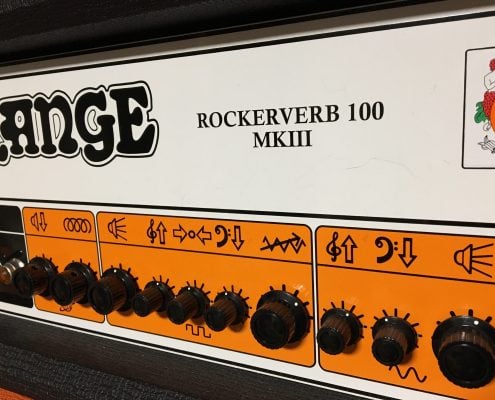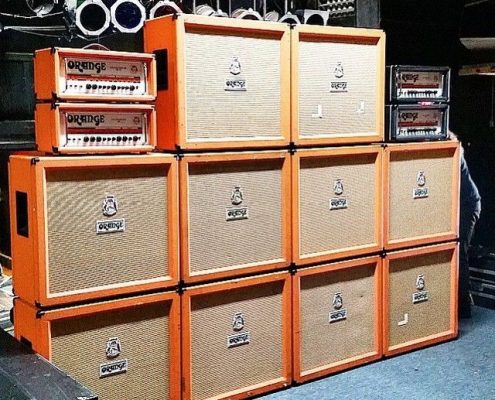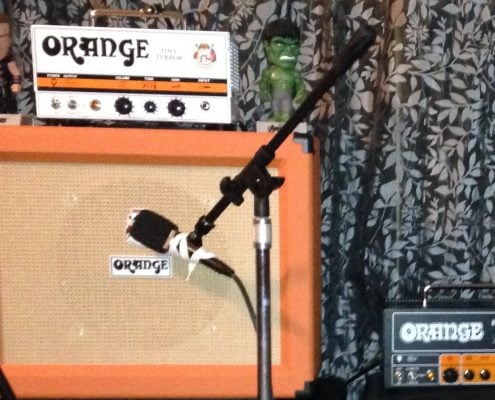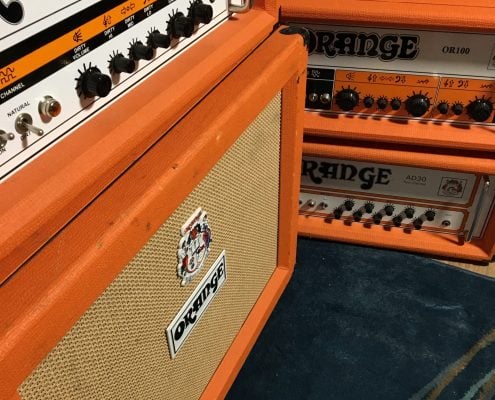By Jason DeLorenzo
I don’t believe that I am the only one that has thought this or hears the question asked repeatedly but it is certainly not limited to Orange. I’d say: no, Orange is not only a metal amp manufacturer, though I may have many years ago before actually plugging into one. Perception is our reality after all. Along with this query, others are often posed about generalizing specific pieces of gear into a genre niche. For example, is the “Orange Rockerverb better for metal?” or “Can I record metal with a 15-watt amp?”. Time after time, the questions come down to knowledge of your gear and how to use. Heaps of gain and tons of wattage aren’t the only way to achieve the tones you may be pursuing–a drip-edge combo and a T-Style will not do metal on their own, they need a little help from a pedal like the Orange Bax Bangeetar.
To assist in answering the main question, there is another query as to your endgame: which of the two big arenas are you going to explore: the stage or studio? Both have very specific–and different–applications, as we all know. For most of us it is unfortunately not possible to bring 10 heads, 5 cabinets and 2 36” pedal boards and 12 guitars on the road (unless you’re Mike from Sleep) but in the studio environment, the more the merrier.







